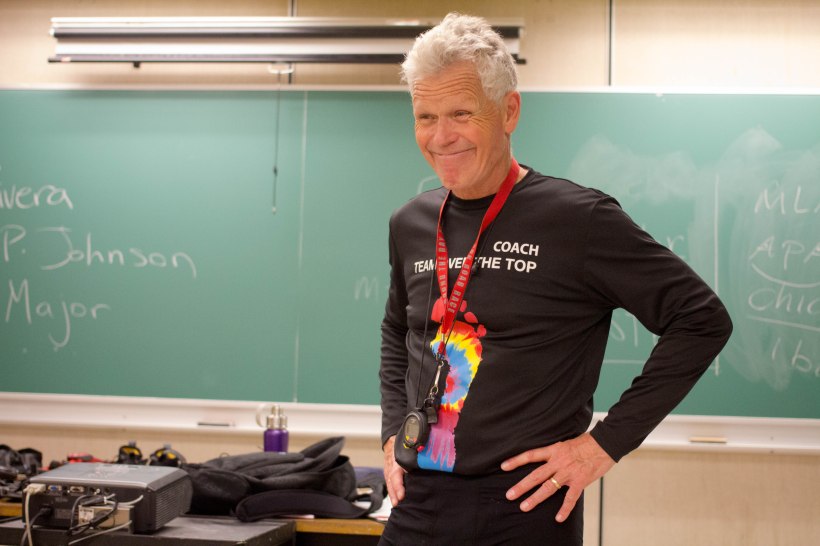Throughout the past few decades that I have been doing my Team Over The Top running clinics, there have been 2 consistent goal races for one reason – they are the TOUGHEST of their kind in North America. The 2 races?
- the 10.8 kilometre Egg Nog ‘Jog’ held on the 2nd Sunday of December in Terra Cotta, Canada in the Niagara Escarpment and

- the 30 kilometre Around The Bay held on the final Sunday of March around Burlington Bay in Hamilton, Canada (anchored by the infamous ‘Valley of Death’)
 The 123rd Around The Bay race did not disappoint. Bitterly cold swirling winds seemed to attack the runners from all angles – and it was relentless. The only saving grace was the freezing rain never materialized. In spite of this, my team showed up confident and ready to rumble.
The 123rd Around The Bay race did not disappoint. Bitterly cold swirling winds seemed to attack the runners from all angles – and it was relentless. The only saving grace was the freezing rain never materialized. In spite of this, my team showed up confident and ready to rumble.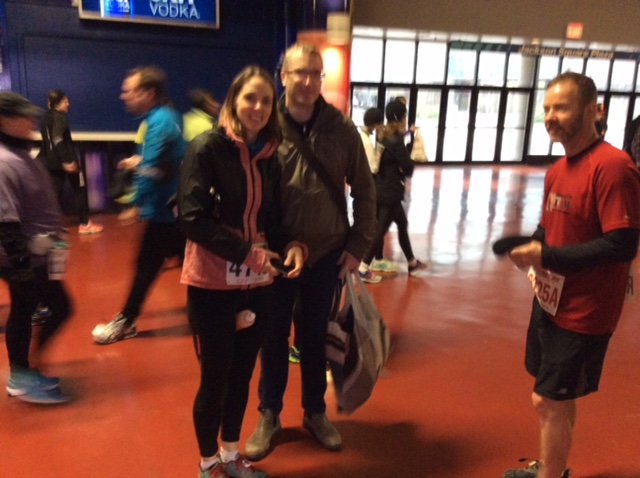 Terry (slated to go under 2:20) aggravated a calf strain on the Thursday before the race and had to sit out. Despite the disappointment, he was there to support his wife, Kimberly and has entered the Ottawa Marathon in late May – his new goal race. Kimberly ran on sheer guts and determination, lasting up to the 23 kilometre mark until an old fractured tailbone injury put her in too much pain to continue. Hell, most never would had STARTED the race. Next year…young lady!!
Terry (slated to go under 2:20) aggravated a calf strain on the Thursday before the race and had to sit out. Despite the disappointment, he was there to support his wife, Kimberly and has entered the Ottawa Marathon in late May – his new goal race. Kimberly ran on sheer guts and determination, lasting up to the 23 kilometre mark until an old fractured tailbone injury put her in too much pain to continue. Hell, most never would had STARTED the race. Next year…young lady!!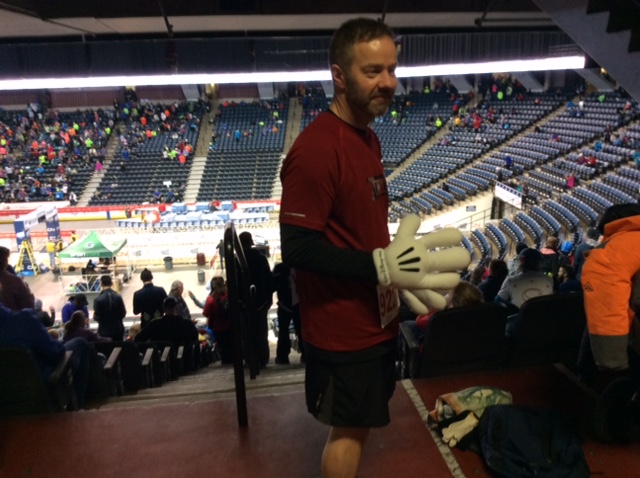 Jason, who has run the Bay as part of my team in 2:08, decided to channel the old coach by donning my Mickey Mouse gloves. Nice try, Jason! This year, he ran the full 30 kms in 2:50 BUT also entered as part of the 3-person relay with his 18 year old daughter, Jasmine, and 12 year old son, Ajay (who ran a 51 minute last 10 kilometres over the hills of Northshore Blvd.! Jason also did this on an infected foot 4 days into antibiotic treatment. As most of you know who follow my blog, Team Over The Toppers are a unique, resilient, stubborn AND talented gang!
Jason, who has run the Bay as part of my team in 2:08, decided to channel the old coach by donning my Mickey Mouse gloves. Nice try, Jason! This year, he ran the full 30 kms in 2:50 BUT also entered as part of the 3-person relay with his 18 year old daughter, Jasmine, and 12 year old son, Ajay (who ran a 51 minute last 10 kilometres over the hills of Northshore Blvd.! Jason also did this on an infected foot 4 days into antibiotic treatment. As most of you know who follow my blog, Team Over The Toppers are a unique, resilient, stubborn AND talented gang!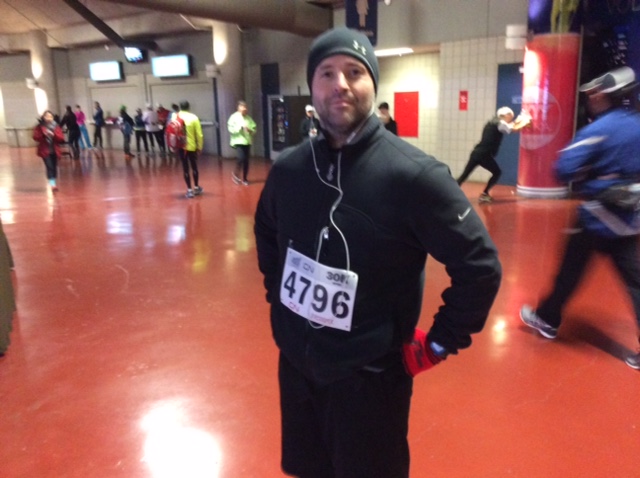 Emidio (photo above) was back for a 2nd crack at the Bay even though his training was not up to par. His goal? Sub 4:00 hours. His result? 3:34 – quite simply, an amazing result especially considering he started to run distances only 11/2 years ago!
Emidio (photo above) was back for a 2nd crack at the Bay even though his training was not up to par. His goal? Sub 4:00 hours. His result? 3:34 – quite simply, an amazing result especially considering he started to run distances only 11/2 years ago! Kerry brought her favourite cheering section that included not just her daughter BUT her husband, son, sister AND mother!
Kerry brought her favourite cheering section that included not just her daughter BUT her husband, son, sister AND mother! The added support MUST have worked as Kerry once again dominated the course, finishing in 2:27, 9th out of 391 in her age group! Kerry is living proof that you CAN run faster, longer and stronger post pregnancy AND as you age.
The added support MUST have worked as Kerry once again dominated the course, finishing in 2:27, 9th out of 391 in her age group! Kerry is living proof that you CAN run faster, longer and stronger post pregnancy AND as you age.
Of course, the Bay would not be the Bay without the teams of paramedics who inevitably take 2-3 runners to hospital every year – it’s that tough a race! The start is always a scene of controlled chaos as upwards of 8,000 make their way to the start line. When I think back to 1983 and my 1st ever Bay race, there were only 280 in the field. My, how times have changed!
The start is always a scene of controlled chaos as upwards of 8,000 make their way to the start line. When I think back to 1983 and my 1st ever Bay race, there were only 280 in the field. My, how times have changed!
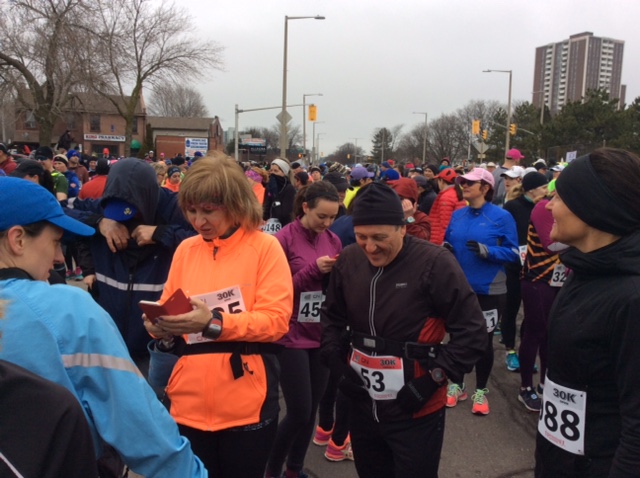 Once the gun goes off, the field TRIES to spread out – this always takes at least 2 kilometres – there are that many runners.
Once the gun goes off, the field TRIES to spread out – this always takes at least 2 kilometres – there are that many runners. 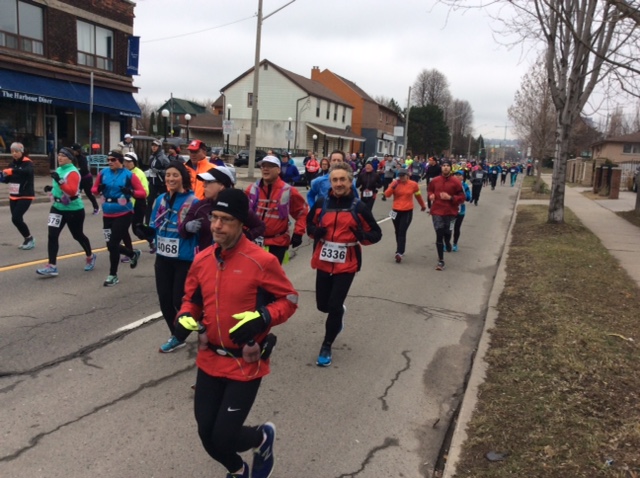 I started with Jason and Kimberly – in the photo below, you will notice them from the back. Showing perfect Squat-Scoot running technique, they were light, tight, compact and forward as well as calm. When they move like this, it is almost ethereal!
I started with Jason and Kimberly – in the photo below, you will notice them from the back. Showing perfect Squat-Scoot running technique, they were light, tight, compact and forward as well as calm. When they move like this, it is almost ethereal! Further out on the course, I always encounter my long-time ‘associates’, the Grim Reaper (at the 28 kilometrte mark) – he is strategically placed to guide those who are flagging into the nearby cemetery. Nasty!!!
Further out on the course, I always encounter my long-time ‘associates’, the Grim Reaper (at the 28 kilometrte mark) – he is strategically placed to guide those who are flagging into the nearby cemetery. Nasty!!! Continuing further back along the course (I always run back to at least the 25 kilometre mark to pick up my runners and pace them to the finish), I come across a fixture in the race – my dear pal, Stan and his ‘posse’ – stationed as always just before the Valley of Death. With Queen’s ‘We Will Rock You” blaring out of speakers on a loop, ALL runners get an extra burst of energy as they approach Hell on Earth!!
Continuing further back along the course (I always run back to at least the 25 kilometre mark to pick up my runners and pace them to the finish), I come across a fixture in the race – my dear pal, Stan and his ‘posse’ – stationed as always just before the Valley of Death. With Queen’s ‘We Will Rock You” blaring out of speakers on a loop, ALL runners get an extra burst of energy as they approach Hell on Earth!!
 At the top of the valley leading to the Valley of Death, Casey blew by me – he was on pace to run a 47 minute 10 kilometre section of the 3 person relay. All I got was his backside (he’s the one in the photo below wearing the white shirt with right arm aloft acknowledging my yell!). His technique is flawless…
At the top of the valley leading to the Valley of Death, Casey blew by me – he was on pace to run a 47 minute 10 kilometre section of the 3 person relay. All I got was his backside (he’s the one in the photo below wearing the white shirt with right arm aloft acknowledging my yell!). His technique is flawless… Just ahead of Casey came Kerry…strong, confident and FAST as she approached the drop-off into the Valley of Death. We are still working on getting her lower to the ground with a more powerful claw-back. In spite of that, she STILL runs quiet and with power over long distances. Beautiful…
Just ahead of Casey came Kerry…strong, confident and FAST as she approached the drop-off into the Valley of Death. We are still working on getting her lower to the ground with a more powerful claw-back. In spite of that, she STILL runs quiet and with power over long distances. Beautiful… Of course, I had to get a shot of the race leader (the 1st photo below) and a few of the top 20 finishers as they hammered past the 27 kilometre mark or powered down AND up the Valley of Death. You will notice the perfect Squat-Scoot form of all of them along with being totally locked into the moment. It is no accident that the leader won by over 7 minutes and the others finished in under 1:45.
Of course, I had to get a shot of the race leader (the 1st photo below) and a few of the top 20 finishers as they hammered past the 27 kilometre mark or powered down AND up the Valley of Death. You will notice the perfect Squat-Scoot form of all of them along with being totally locked into the moment. It is no accident that the leader won by over 7 minutes and the others finished in under 1:45.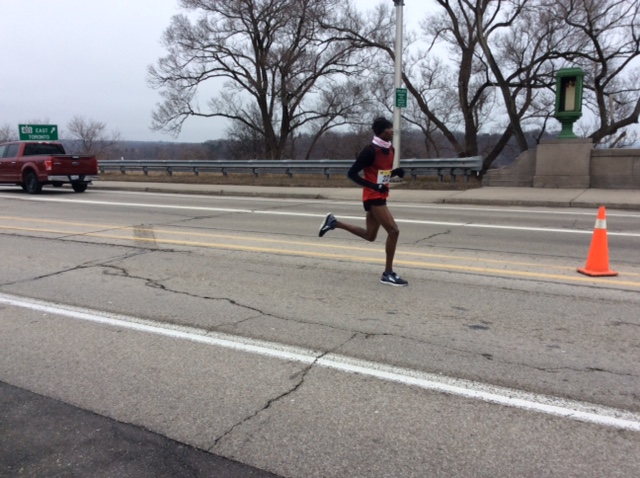

 The finish line inside First Ontario Place NEVER seems to materialize. Once it does, though, anyone finishing the 30 kilometre race lets out a big sigh of relief.
The finish line inside First Ontario Place NEVER seems to materialize. Once it does, though, anyone finishing the 30 kilometre race lets out a big sigh of relief. Alas, once the well-earned medals get draped around your neck, it actually all seems worth it. Alicia, her husband, Wes and Casey finished 8th overall in the 3 person relay – a truly commendable placing!
Alas, once the well-earned medals get draped around your neck, it actually all seems worth it. Alicia, her husband, Wes and Casey finished 8th overall in the 3 person relay – a truly commendable placing! Teresa, my on-line client from Brantford who joined us for a few training sessions and technical lessons from me, finished her 1st Bay in 3:37! Her goal? Sub 2:40. She followed my training programme to a T and the results spoke for them selves. A hearty congrats to you, young lady!!
Teresa, my on-line client from Brantford who joined us for a few training sessions and technical lessons from me, finished her 1st Bay in 3:37! Her goal? Sub 2:40. She followed my training programme to a T and the results spoke for them selves. A hearty congrats to you, young lady!!
Kerry and her sister, Sarah (who finished the 5 kilometre race in a career-best 27:34) posed with their medals followed by Kerry’s son, Devon, showing off Mom’s hardware. Everyone was getting in on the act!!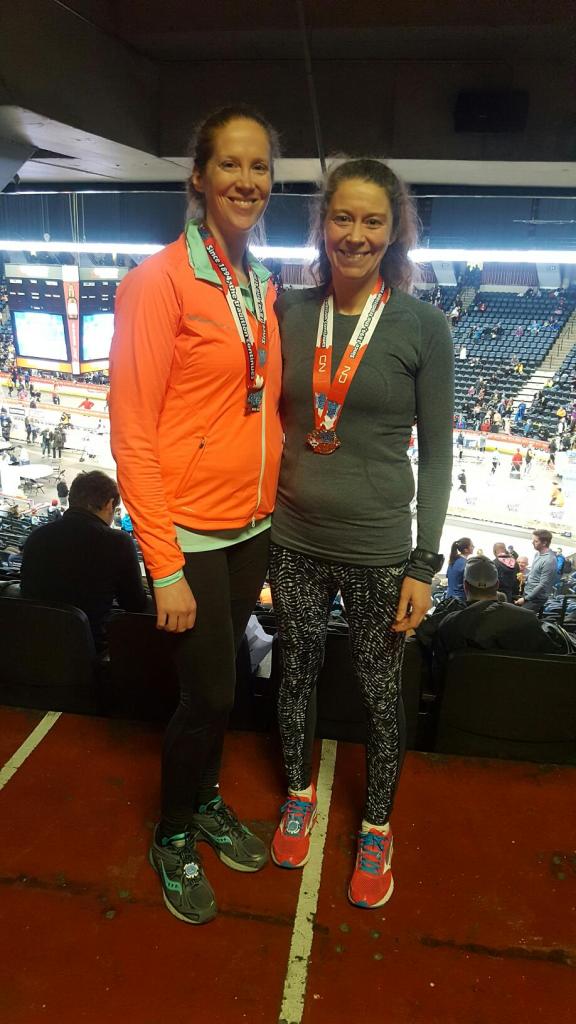
 As I say every year, it was a SPECIAL Bay race filled with SPECIAL moments and SIGNIFICANT achievements. There are always life lessons learned – you cannot finish the Bay without overcoming internal ‘darkness’, the elements and, last but not least the VALLEY OF DEATH!
As I say every year, it was a SPECIAL Bay race filled with SPECIAL moments and SIGNIFICANT achievements. There are always life lessons learned – you cannot finish the Bay without overcoming internal ‘darkness’, the elements and, last but not least the VALLEY OF DEATH!
Congratulations once again to my Team Over The Top gang for a race well done. Not many train like us AND not many race like us…there’s a good reason for that…not many are as TOUGH as us!!
coach Jeff


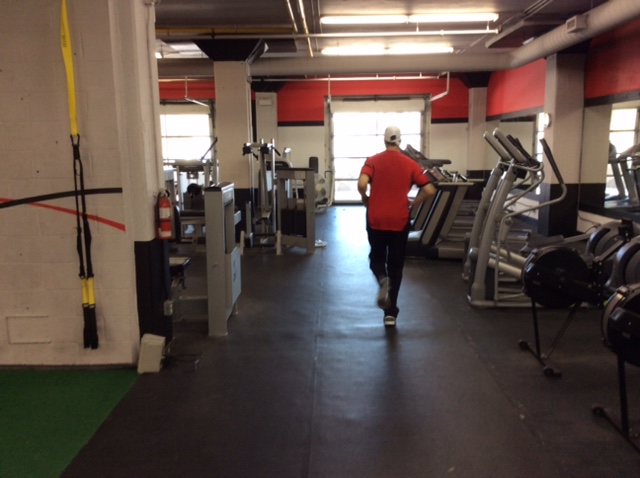 out. This also happens on the opposite side, causing his shoulders to rotate, the planted foot hip to drop and the planted foot to land heavy and flat. Also notice the locked knee upon impact which increases the negative forces through his whole body. Hatem experiences consistent mid-low back pain as a result. Finally, note his hunched shoulders that accentuate a forward lean. This was also casuing him to hit hard, loud and heavy.
out. This also happens on the opposite side, causing his shoulders to rotate, the planted foot hip to drop and the planted foot to land heavy and flat. Also notice the locked knee upon impact which increases the negative forces through his whole body. Hatem experiences consistent mid-low back pain as a result. Finally, note his hunched shoulders that accentuate a forward lean. This was also casuing him to hit hard, loud and heavy.

 From there, I checked Hatem’s body symmetry and found that his right leg showed itself shorter than his left. This told me that his right hip, lower back, pelvis and groin were ‘locked up’. Hatem mentioned that “maybe that’s why I have discomfort on that side”. The asymmetry leads to all
From there, I checked Hatem’s body symmetry and found that his right leg showed itself shorter than his left. This told me that his right hip, lower back, pelvis and groin were ‘locked up’. Hatem mentioned that “maybe that’s why I have discomfort on that side”. The asymmetry leads to all 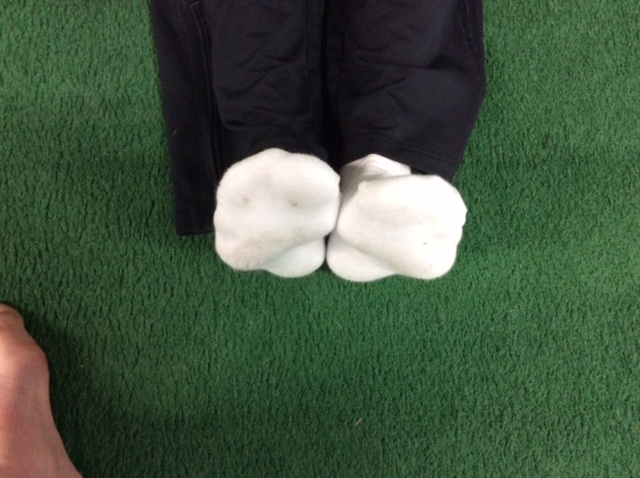 sorts of issues with uneven impact when running and resultant muscle-tendon-ligament breakdowns over time. I then proceeded to take Hatem through a series of unlocking drills to release his right side especially. You will notice the restriction of range of motion with the leg swings and the right shoulder unable to rest on the floor in the photos below BEFORE I worked on unlocking him.
sorts of issues with uneven impact when running and resultant muscle-tendon-ligament breakdowns over time. I then proceeded to take Hatem through a series of unlocking drills to release his right side especially. You will notice the restriction of range of motion with the leg swings and the right shoulder unable to rest on the floor in the photos below BEFORE I worked on unlocking him.
 The degree of restriction shocked Hatem but indicated to him how important it was to get unlocked. Doing the hip opening drill on the right side, the Functional Chain Trainer drill (for 3 minutes) and the Health Bridges (level 1 for 4 minutes) had a profound effect on realigning Hatem’s body in a much more anatomically correct manner for safe, powerful motion.
The degree of restriction shocked Hatem but indicated to him how important it was to get unlocked. Doing the hip opening drill on the right side, the Functional Chain Trainer drill (for 3 minutes) and the Health Bridges (level 1 for 4 minutes) had a profound effect on realigning Hatem’s body in a much more anatomically correct manner for safe, powerful motion.

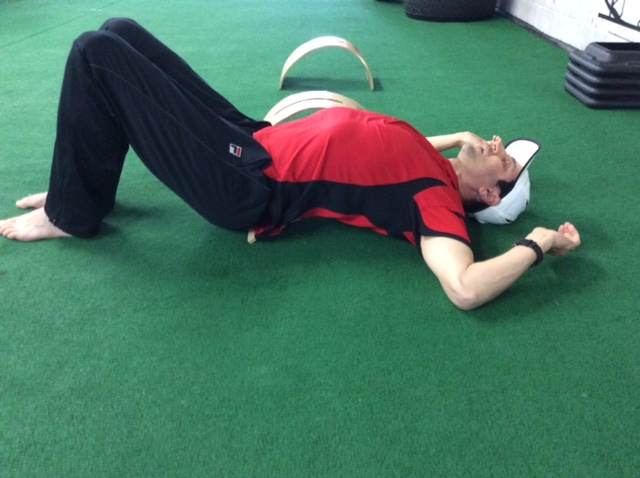 After all of the unlocking work, you will note that his ability to do the leg swings improved to where his shoulders now remained on the floor throughout and his range through the hips and lower back improved significantly.
After all of the unlocking work, you will note that his ability to do the leg swings improved to where his shoulders now remained on the floor throughout and his range through the hips and lower back improved significantly.
 Checking his body symmetry after the drills (which took all of 25 minutes) shows perfect alignment (see photo below). Hatem was already feeling unlocked, better balanced with a more upright
Checking his body symmetry after the drills (which took all of 25 minutes) shows perfect alignment (see photo below). Hatem was already feeling unlocked, better balanced with a more upright posture. These changes reflected directly in his barefoot running technique. I spent 15 minutes guiding him through my Squat-Scoot technique of safe, efficient mid-foot running and, voila, he was soon moving as quiet as a cat and as efficient as a wolf. He was amazed at how good it felt to move like this.
posture. These changes reflected directly in his barefoot running technique. I spent 15 minutes guiding him through my Squat-Scoot technique of safe, efficient mid-foot running and, voila, he was soon moving as quiet as a cat and as efficient as a wolf. He was amazed at how good it felt to move like this.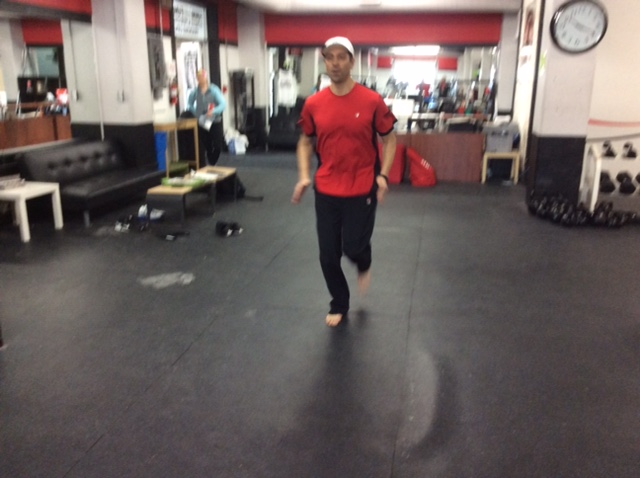
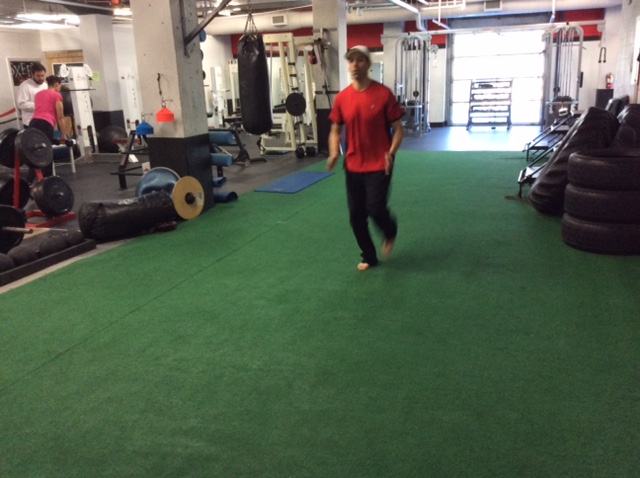 You will note above his shoulders are now level, arms are driving forward, body is aligned over the feet, knees are bent throughout, heels are flicking back, knees are driving forward, head and neck are relaxed, hips are square and he is landing mid foot 1st. This was quite simply a perfect transition which did NOT really surprise me. I knew from our earlier years training together that Hatem was a great student and quick learner.
You will note above his shoulders are now level, arms are driving forward, body is aligned over the feet, knees are bent throughout, heels are flicking back, knees are driving forward, head and neck are relaxed, hips are square and he is landing mid foot 1st. This was quite simply a perfect transition which did NOT really surprise me. I knew from our earlier years training together that Hatem was a great student and quick learner.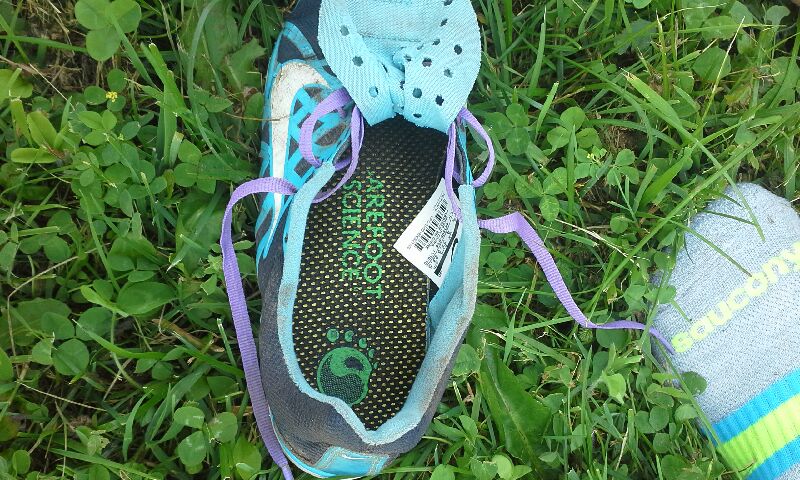
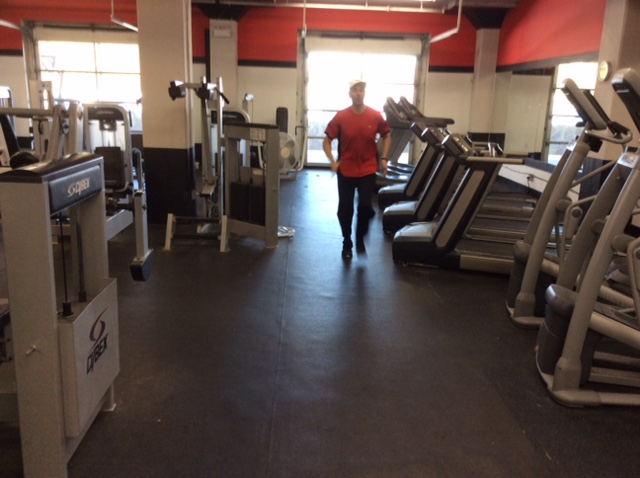
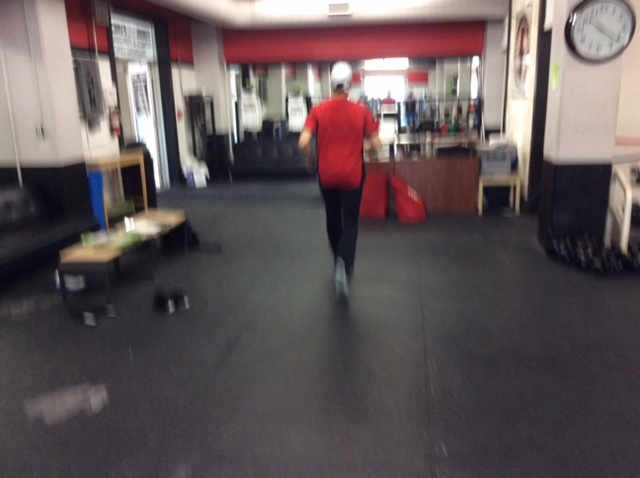 His transition for the time being was complete! For those of you who struggle to run safely on a consistent basis, take a moment to assess you body symmetry, balance and technique. If you find flaws in any of these, take the time to follow my protocol laid out above and you ALSO will be running injury-free…and MAYBE even BAREFOOT!!
His transition for the time being was complete! For those of you who struggle to run safely on a consistent basis, take a moment to assess you body symmetry, balance and technique. If you find flaws in any of these, take the time to follow my protocol laid out above and you ALSO will be running injury-free…and MAYBE even BAREFOOT!!

 as I call it to the finish line. We actually started at the finish line, ran backwards to the 13 kilometre mark, and back!). I mention this since not many train on the course as intently as my runners. They power up and down the hills below goal race pace AND maintain goal race pace on the flats. It is quite simply DAMN difficult!
as I call it to the finish line. We actually started at the finish line, ran backwards to the 13 kilometre mark, and back!). I mention this since not many train on the course as intently as my runners. They power up and down the hills below goal race pace AND maintain goal race pace on the flats. It is quite simply DAMN difficult!
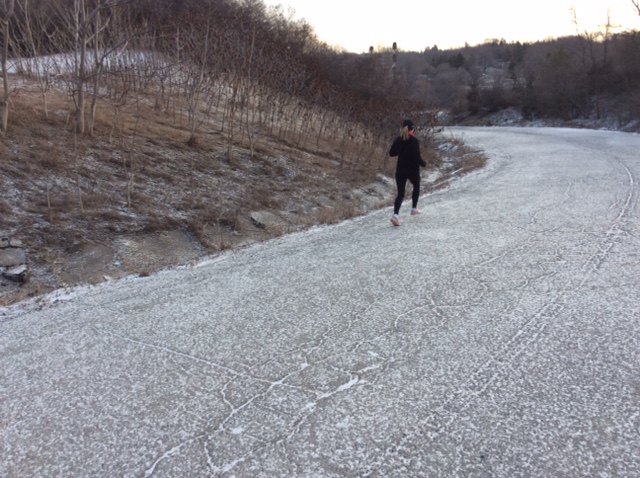

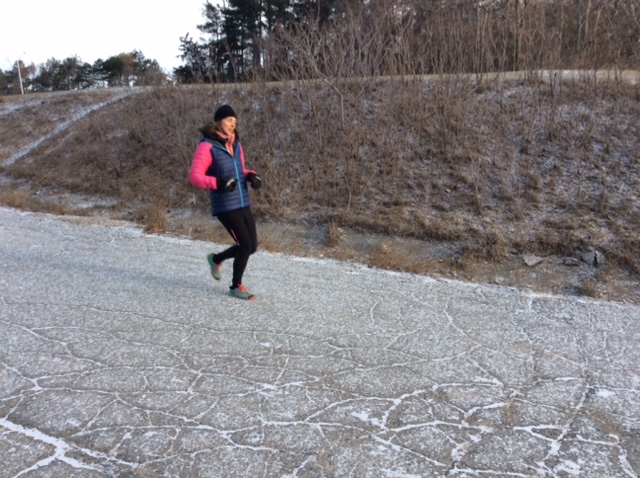
 These are my runners attacking the downhill section of the Valley of Death 1. Note how ALL of them have a slight knee lift. This helps them allow gravity to do more of the work with virtually NO strain on the quadriceps and hip flexors – the bane of most runners going downhill. You will also notice that the knees stay bent and the feet land just ahead of the knees but in a mid foot contact position (note Annette in Photo 5 above). This helps them hold speed without undue fatigue. Finally, note how their upper bodies stay upright and the arms drive forward in support. The head and neck stay in line over the shoulders – thus, there is no cramping nor muscle strain. A few will even do a slight weave downhill to cushion the impact without losing pace. Not many other runners can keep pace with my Team on the hills. It is beautiful to behold en mass!
These are my runners attacking the downhill section of the Valley of Death 1. Note how ALL of them have a slight knee lift. This helps them allow gravity to do more of the work with virtually NO strain on the quadriceps and hip flexors – the bane of most runners going downhill. You will also notice that the knees stay bent and the feet land just ahead of the knees but in a mid foot contact position (note Annette in Photo 5 above). This helps them hold speed without undue fatigue. Finally, note how their upper bodies stay upright and the arms drive forward in support. The head and neck stay in line over the shoulders – thus, there is no cramping nor muscle strain. A few will even do a slight weave downhill to cushion the impact without losing pace. Not many other runners can keep pace with my Team on the hills. It is beautiful to behold en mass!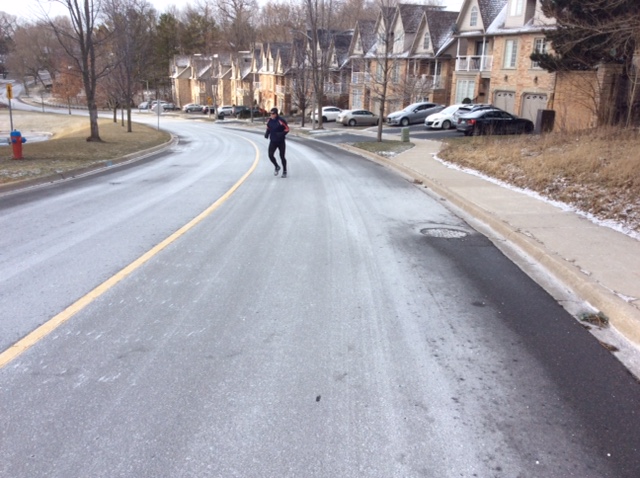


 The only thing I might change is his arm position (drop them slightly and drive them forward). Having said that, it was bitterly cold and young Ajay was not wearing anything on his hands!! Notice the runner beside him (not one of my runners). Her landing foot is totally flat and her drive leg is barley off the road – technique like this inevitably leads to needless ‘itis’ injuries AND loss of energy into the road!
The only thing I might change is his arm position (drop them slightly and drive them forward). Having said that, it was bitterly cold and young Ajay was not wearing anything on his hands!! Notice the runner beside him (not one of my runners). Her landing foot is totally flat and her drive leg is barley off the road – technique like this inevitably leads to needless ‘itis’ injuries AND loss of energy into the road!

 Alicia, Kimberly and young Rebecca (age 24) are literally floating along the Yoprk Boulevard and Royal Botannical Gardens sections. They are airborne BUT keep knees bent, pawing back with the lead leg to encourage a light, safe mid foot landing. There is NO shoulder rotation, thus keeping the whole body squared up and minimizing the road contact time. The power forward transfer of energy is thus complete!
Alicia, Kimberly and young Rebecca (age 24) are literally floating along the Yoprk Boulevard and Royal Botannical Gardens sections. They are airborne BUT keep knees bent, pawing back with the lead leg to encourage a light, safe mid foot landing. There is NO shoulder rotation, thus keeping the whole body squared up and minimizing the road contact time. The power forward transfer of energy is thus complete! 
 Finally, her heel flick and forward arm drive to propel her faster to the top are letter perfect. She conquered the demons on this occasion!!
Finally, her heel flick and forward arm drive to propel her faster to the top are letter perfect. She conquered the demons on this occasion!!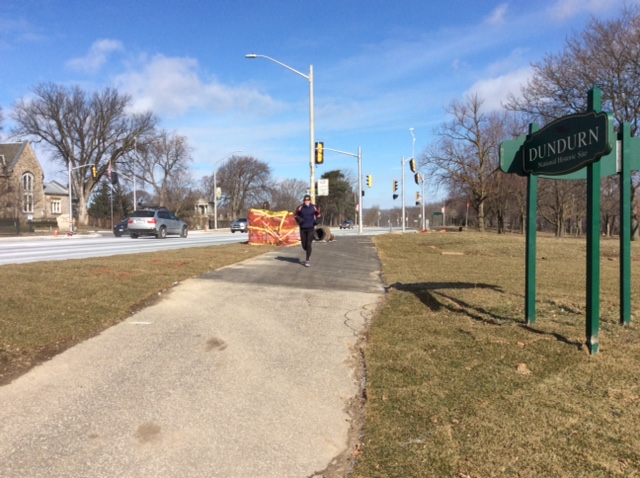 Dundurn Castle about 2 kilometres from the finish. As you can see below, the effects of the effort are evident BUT the confidence gleaned from a run well done is off the charts.
Dundurn Castle about 2 kilometres from the finish. As you can see below, the effects of the effort are evident BUT the confidence gleaned from a run well done is off the charts.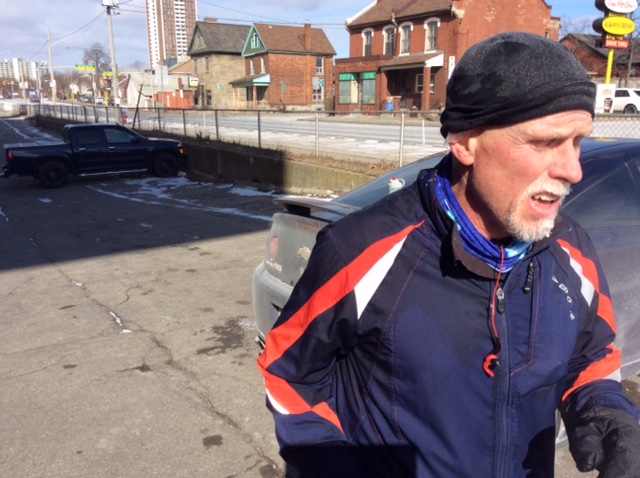 For most of you, training like my Team Over The Toppers may indeed be ‘over the top’!! If you even incorporate SOME of my techniques into your running, I guarantee that avoidable ‘itis’ injuries will be a thing of the past!
For most of you, training like my Team Over The Toppers may indeed be ‘over the top’!! If you even incorporate SOME of my techniques into your running, I guarantee that avoidable ‘itis’ injuries will be a thing of the past! This is a 900 metre straight stretch one way of flat asphalt road – a perfect track for us! There are stop signs at 3 major intersections that serve as turn-around points for the 1400, 900 and 400 metre repeats of the training session.
This is a 900 metre straight stretch one way of flat asphalt road – a perfect track for us! There are stop signs at 3 major intersections that serve as turn-around points for the 1400, 900 and 400 metre repeats of the training session. From there, I have them do a 200 metre slow run warm-up where the focus is on a tight, light, compact, forward squat-scoot to lock in perfect practice. The team are also getting better at this (and thus, they have no avoidable running injuries!).
From there, I have them do a 200 metre slow run warm-up where the focus is on a tight, light, compact, forward squat-scoot to lock in perfect practice. The team are also getting better at this (and thus, they have no avoidable running injuries!).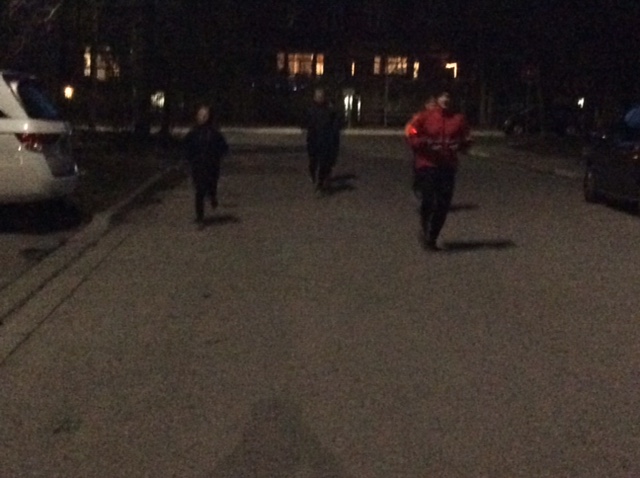 The 1st repeat is always 400 metres at 8/10 maximum pace (200 metres out and back). As you can see, most of my runners stay low with bent knees throughout the running cycle. They easily increase their foot speed with only a minor increase in effort. They knee drive forward, heel flick and paw-back on the support phase – with virtually NO ground impact noise. Beautiful!!!
The 1st repeat is always 400 metres at 8/10 maximum pace (200 metres out and back). As you can see, most of my runners stay low with bent knees throughout the running cycle. They easily increase their foot speed with only a minor increase in effort. They knee drive forward, heel flick and paw-back on the support phase – with virtually NO ground impact noise. Beautiful!!! One of my top marathon runners (a Boston qualifier of 3:21 followed up by a Boston of 2:18!!) has been fighting to activate from her gluteus medius to avoid flailing out with her feet – especially her left (as you can see below finishing a fast 400 metre repeat). Her other challenge is avoiding a heel strike as she increases her pace.
One of my top marathon runners (a Boston qualifier of 3:21 followed up by a Boston of 2:18!!) has been fighting to activate from her gluteus medius to avoid flailing out with her feet – especially her left (as you can see below finishing a fast 400 metre repeat). Her other challenge is avoiding a heel strike as she increases her pace.  Just think how fast she will be when this all gets figured out! We are working on gluteal isolation drills along with paw-back practice to lock in the squat-scoot. This will come in time.
Just think how fast she will be when this all gets figured out! We are working on gluteal isolation drills along with paw-back practice to lock in the squat-scoot. This will come in time.
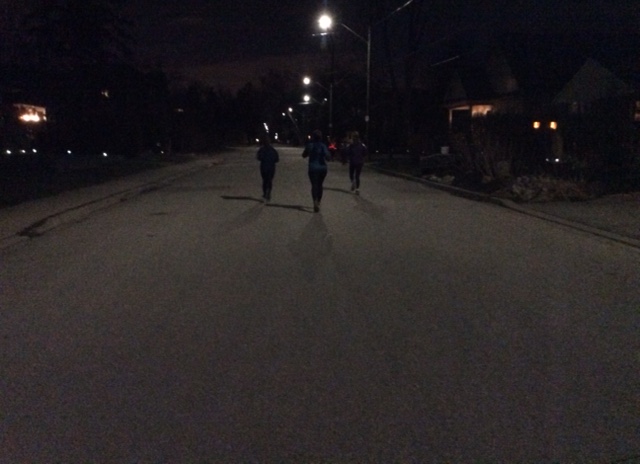 Another challenge for some of my runners (and most runners in general) is landing too flat on impact. Doing this causes energy to be lost downward into the surface instead of being transferred forward from the body. I call this giving into gravity instead of bracing against its downward pull. Learning how to land forward and light allows you to transfer power forward.
Another challenge for some of my runners (and most runners in general) is landing too flat on impact. Doing this causes energy to be lost downward into the surface instead of being transferred forward from the body. I call this giving into gravity instead of bracing against its downward pull. Learning how to land forward and light allows you to transfer power forward. The 1800 metre and 1400 metre 7/10 maximum pace repeats were done about 25 minutes into the session. Physical AND mental fatigue was setting in BUT you would never know it by the speed and power of my runners. The top picture below shows my runners locked in and balanced at an intense pace. In the second photo below, my runner shows almost perfect squat-scoot technique. She is still hitting a tad flat BUT this will be eliminated within 1 week.
The 1800 metre and 1400 metre 7/10 maximum pace repeats were done about 25 minutes into the session. Physical AND mental fatigue was setting in BUT you would never know it by the speed and power of my runners. The top picture below shows my runners locked in and balanced at an intense pace. In the second photo below, my runner shows almost perfect squat-scoot technique. She is still hitting a tad flat BUT this will be eliminated within 1 week.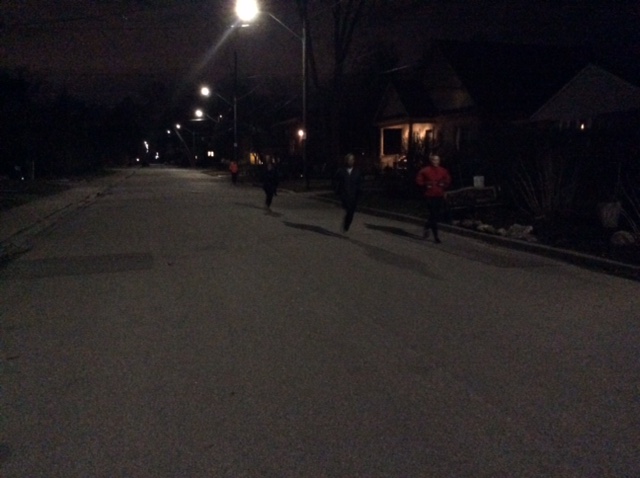
 At the end of her final 1800 metre 7/10 maximum pace repeat, you will notice one of my top runners not only landing flat but also flailing out with her right foot, both signs of not recruiting all 3 main gluteal muscles during the firing phase of the run motion. The end result over the years has been IT Band syndrome and runner’s knee injuries. They are in the process of being permanently eliminated!
At the end of her final 1800 metre 7/10 maximum pace repeat, you will notice one of my top runners not only landing flat but also flailing out with her right foot, both signs of not recruiting all 3 main gluteal muscles during the firing phase of the run motion. The end result over the years has been IT Band syndrome and runner’s knee injuries. They are in the process of being permanently eliminated!  The solution includes regularly doing a series of drills to specifically recruit the gluteal muscles whilst also bracing from the major leg muscles to keep the the knee from buckling in and the foot from turning out. One-legged knee drops are demonstrated in the photo below as one of the keys to improved alignment. You can see the difference with my runner in the photo below. The knee lines up over the foot and beneath the hip – perfect alignment for injury-free running.
The solution includes regularly doing a series of drills to specifically recruit the gluteal muscles whilst also bracing from the major leg muscles to keep the the knee from buckling in and the foot from turning out. One-legged knee drops are demonstrated in the photo below as one of the keys to improved alignment. You can see the difference with my runner in the photo below. The knee lines up over the foot and beneath the hip – perfect alignment for injury-free running.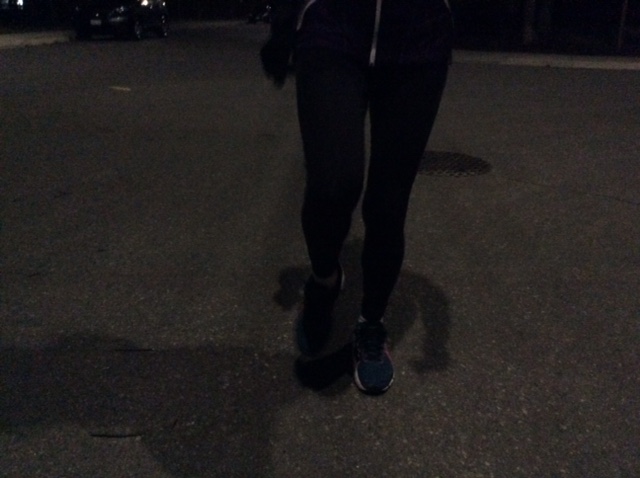 Doing speed endurance is critically important to improve overall running performance. Even MORE important is doing it PERFECTLY!!
Doing speed endurance is critically important to improve overall running performance. Even MORE important is doing it PERFECTLY!!
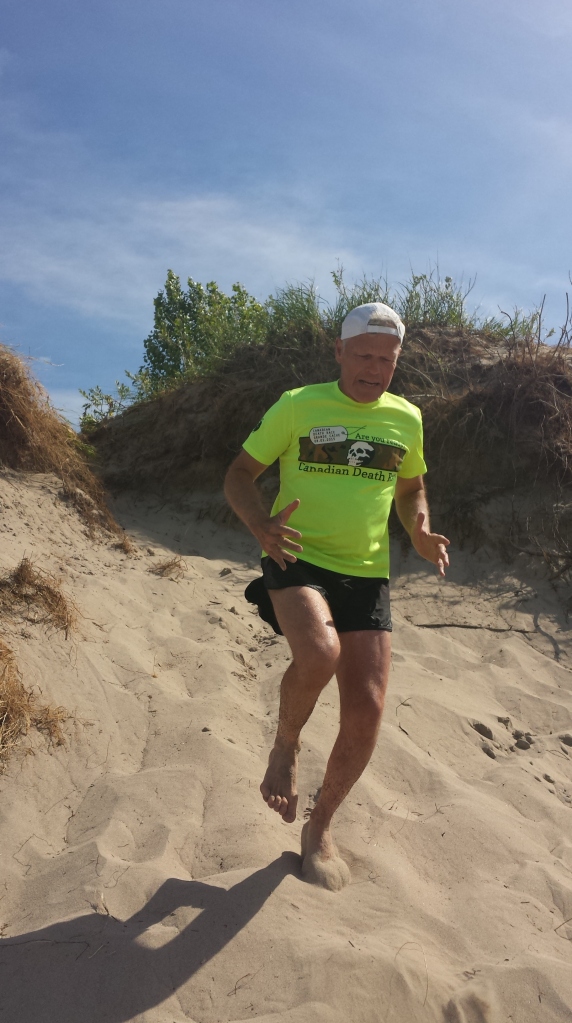 I also figured out by running barefoot consistently on any surface, muscle soreness was non-existent. After virtually any run, I would awake the next day, get up and feel absolutely perfect. No fatigue, no discomfort, no injuries, no imbalance…amazing as that reads, it is 100% true.
I also figured out by running barefoot consistently on any surface, muscle soreness was non-existent. After virtually any run, I would awake the next day, get up and feel absolutely perfect. No fatigue, no discomfort, no injuries, no imbalance…amazing as that reads, it is 100% true. 
 During my Varsity rugby days (ages 19 to 23), I always led the team in drills and training. Implementing backwards running (which, at the time, was NOT part of the standard rugby training protocol) made sense to me at a few levels. First, it made us focus on balance and spatial awareness. Secondly, it strengthened our back, butt and hamstring muscles better than any other drill I could thing of. Only many years later did I also figure out that backwards running activated the Extensor Chain muscles of the body (similar to what the SkiX device accomplishes)
During my Varsity rugby days (ages 19 to 23), I always led the team in drills and training. Implementing backwards running (which, at the time, was NOT part of the standard rugby training protocol) made sense to me at a few levels. First, it made us focus on balance and spatial awareness. Secondly, it strengthened our back, butt and hamstring muscles better than any other drill I could thing of. Only many years later did I also figure out that backwards running activated the Extensor Chain muscles of the body (similar to what the SkiX device accomplishes) – thus improving posture, body centering and decreasing the risk of avoidable running injuries.
– thus improving posture, body centering and decreasing the risk of avoidable running injuries.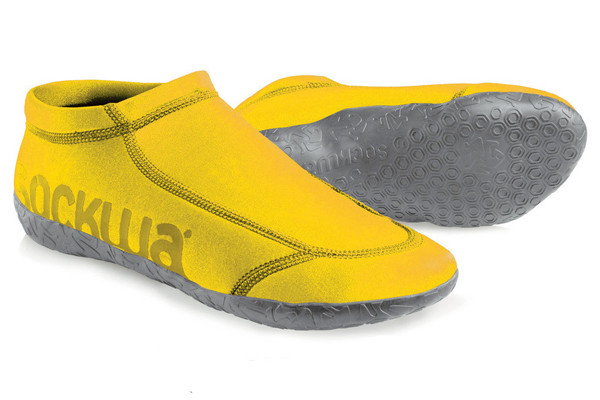

 my Vibram Five Fingers as option 2
my Vibram Five Fingers as option 2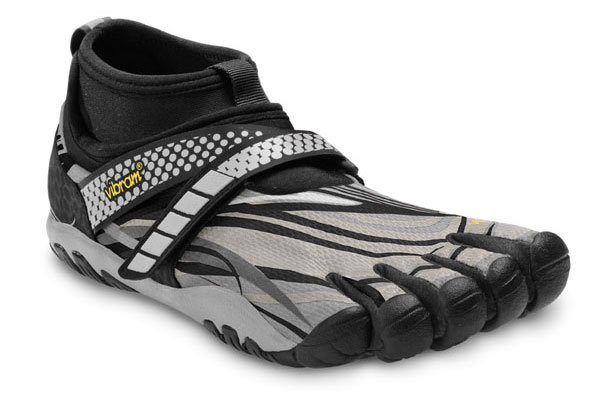 and my Skora flex as option 3. They are in the top left corner of the photo below. What I notice when
and my Skora flex as option 3. They are in the top left corner of the photo below. What I notice when wearing ANY of these for a run in nasty winter weather, my feet are not nearly as activated. I feel heavier and I run with less confidence. Worse than all of that, I wake up the next morning still, sore and unable to move up and down stairs without grabbing a railing. This NEVER happens when I am able to run barefoot. The flushing out of toxins through my bare feet, the full proprioceptive activation of my body and the light, flicking action of my feet all contribute to NO PAIN during and post-run.
wearing ANY of these for a run in nasty winter weather, my feet are not nearly as activated. I feel heavier and I run with less confidence. Worse than all of that, I wake up the next morning still, sore and unable to move up and down stairs without grabbing a railing. This NEVER happens when I am able to run barefoot. The flushing out of toxins through my bare feet, the full proprioceptive activation of my body and the light, flicking action of my feet all contribute to NO PAIN during and post-run.